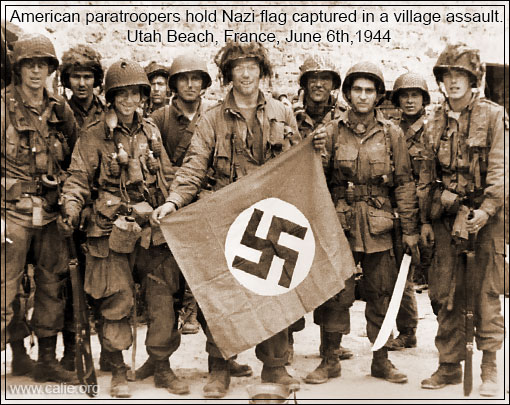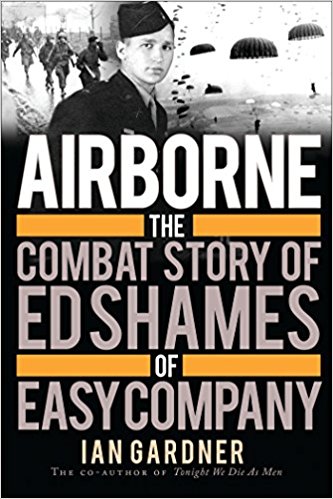
During World War II American paratroopers fought from Port Moresby, New Guinea to North Africa. They were trained to fight in any part of the world in any conditions, in any climate, or in any terrain. Whether it’s a desert environment or snow-capped mountains, paratroopers can fight anywhere.
The training to be an airborne soldier was tough, but so was the job. What set airborne soldiers apart was their ability to jump into combat. Paratroopers are not ordinary soldiers. Their battlefields are behind enemy lines. They drop silently from the sky. They are messengers of death and destruction. Lightly armed, unsupported by tanks and heavy artillery, they fight time after time against overwhelming odds and win.
Some of the best WWII Airplane Nose Art
Here is how a fighting paratrooper is made.
A volunteer candidate learns how to jump off stands six feet in the air, to tumble and to fall. The trainasium is a 60-ft high aerial assault course. It looks like a jungle gym on steroids, built for giants. Its unique design tests a recruit’s willingness to jump out of a plane. If the candidate is afraid of heights or leaping out of an airplane, the trainasium puts them face-to-face with their fears. By running, crawling and jumping at height, it simulates the exit phase of a parachute jump. The 60-foot beam walk in the air was a pass or fail event.

It’s a process that builds bodies and spirits.
The training gets tougher as the weeks pass. The survivors jump from 34-foot towers to simulate jumping from an airplane. The candidate got strapped into a harness and a quick slide to the ground from the tower. It gave the candidate of the feeling of movement in the air.
Impossible Missions: The Devil’s Brigade – WWII’s First Special Service Force Part 1 – Int
A wind machine was used so students could learn how to handle the parachute on the ground after they landed.
Next, the student got dropped from a 200-foot tower in a parachute chair. This gives him an idea of height and view. It gives him the sensation of coming down quickly.
Now he gets closer to the real thing. A cable hoisted the candidate to the top of the tower. He learned by feel what it felt like when a parachute opens.
Next, the student learned his parachute inside and out. He learned to pack it fold-by-fold. Each piece in its place for compactness and order. Every cord is checked and in position. He gave his parachute his full attention. With his parachute hung his life.

Using a dummy plane mock-up, the student learned to time his jumps. He went back to the tower again, this time jumping with a parachute already inflated. The student is ready now and equipped. He wore an old football helmet to protect his head and high boots to break the landing shock. The student was up for final inspection before he loaded the plane. The plane was ready, and so were the men. Flying underneath him is the objective that he must locate. “Stand up!” is the order from the jumpmaster. A second later the jumpmaster yells, “Hook static lines!”
The men help each other with the last minute checkup. The men wait for the order. The order comes, “Jump!” Eighteen men in ten seconds exit the aircraft. Their first jump is over as soon as it begins.
The student drift to the objective. He worked the lines of his parachutes to guide him to their targets. After landing, in a few seconds, he was ready for action with his rifle and demolition kits.

A paratrooper must be a master of many arts. A paratrooper not only fights in Europe, not only in the deserts of North Africa, or the jungles of the Pacific but everywhere.
Airborne soldiers are taught to survive everywhere and anywhere. The paratroopers in World War II were a combination of brave fighting men, taught to survive overwhelming odds and willing to parachute behind enemy lines.
In World War II, paratroops were a product of new training for a new kind of war. Their graduation ceremony was to jump into Europe and the Pacific to fight against tyranny and Fascism and win. And win they did.

About the author:
Oto holds a BS in History from Oregon State University and a MMA in Military History from American Public University. He served three tours in Iraq and Afghanistan as a Company Commander and Staff Trainer to the Afghan National Army. He was wounded once and decorated three times. Oto is an Infantry Lieutenant Colonel in the Army Reserve.










Leave a Reply
Your email address will not be published. Required fields are marked *